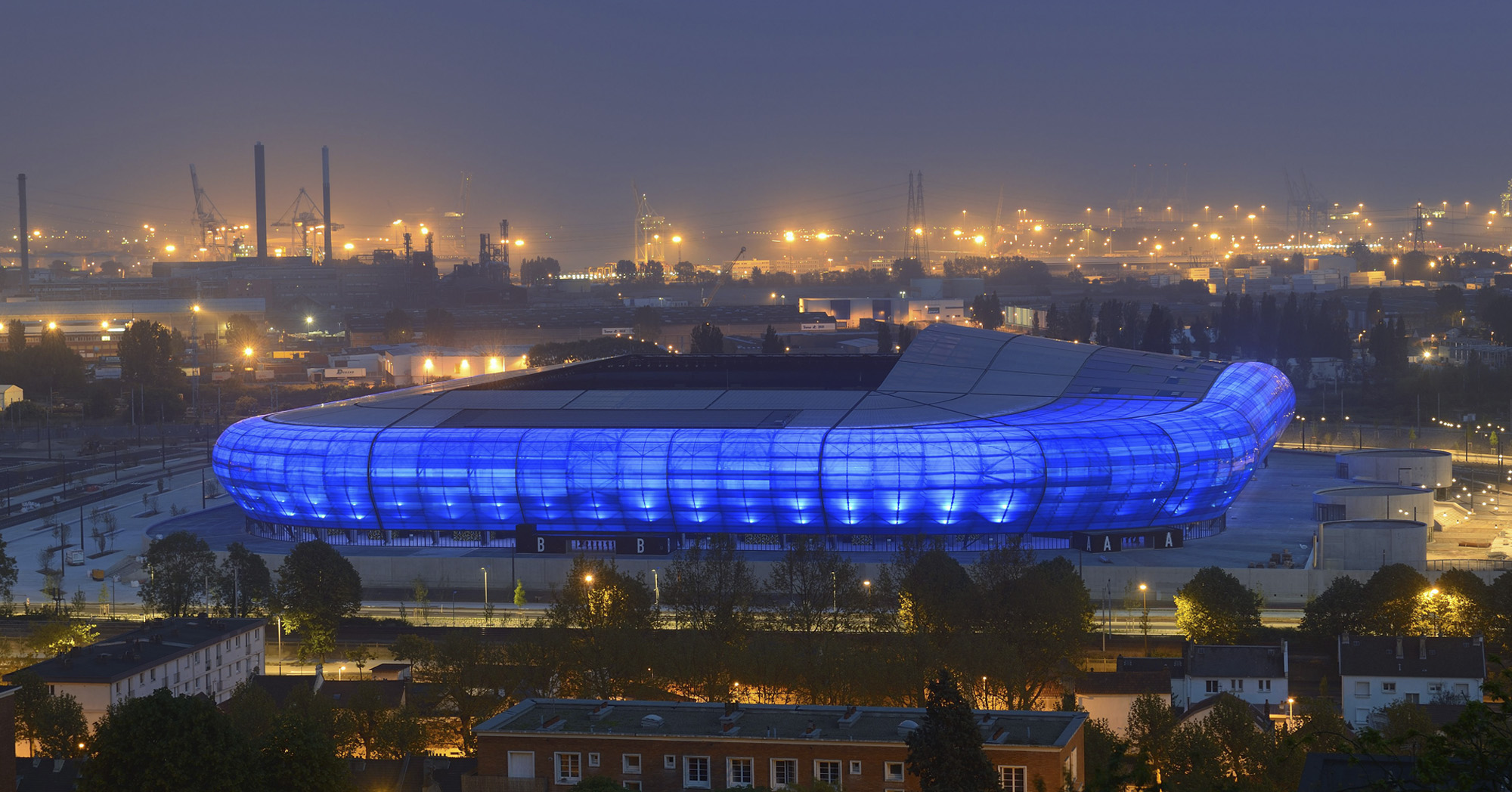- February 10, 2018
- Posted by: SportsV
- Categories: Event News, Home News, Industry News, News, Press Releases

Stade Océane in Le Havre, France, is set to host seven fixtures at next year’s FIFA Women’s World Cup 2019.
KSS and SCAU designed the award-winning, 25,000-capacity Stade Océane – home to French Ligue 2 side, Le Havre Athletic Club (Le Havre AC) – which opened its doors back in June 2012, delivering a landmark ‘energy positive’ venue, providing an intense, English stadia experience.
Stade Océane is one of nine stadiums chosen to host matches, including Stade des Alpes in Grenoble, Parc Olympique Lyonnais, Stade de la Mosson in Montpellier, Allianz Riviera in Nice, Parc des Princes in Paris, Stade Auguste-Delaune in Reims, Roazhon Park in Rennes and Stade du Hainaut in Valenciennes.
On Tuesday, a FIFA delegation visited Stade Océane to inspect the facilities with Tournament Director, Bertrand Paquette, who said afterwards:
Le Havre is a territory that works a lot for the development of women’s football. This stadium is simply beautiful, and the perfect venue to host matches.
A representative for KSS – the UK-based architecture, design and graphics practice that has worked on sports venue projects such as: No.1 Court, Wimbledon/AELTC; Main Stand Concourses & Stadium Expansion, Anfield/Liverpool FC; Twickenham Stadium; Sammy Ofer Stadium for Maccabi Haifa and Hapoel Haifa; Sport Ireland’s National Indoor Arena – Dublin; The AMEX Community Stadium and Training Centre for Brighton & Hove Albion FC – said:
KSS look forward to being there to experience the FIFA Women’s World Cup 2019.
Project details
KSS and SCAU designed the 25,000-capacity stadium for Le Havre AC, which was won via a design competition, and boasts the title as Europe’s first “energy positive” stadium.
The brief from the Club was to design a landmark building that would sit proudly at the entrance to the Port City of Le Havre, and a venue that would deliver the “English stadia experience”.
The design concept reflects the history of the Club (including its English ancestry) and the pixelated ETFE shell cladding imitates the two core elements of sea and sky, and acts as a shining beacon for the city day and night.
The client for the €90m project was Vinci Construction, France, and CODAH.
For further information on KSS, check out their Directory listing by simply clicking here.
Image, courtesy: KSS


